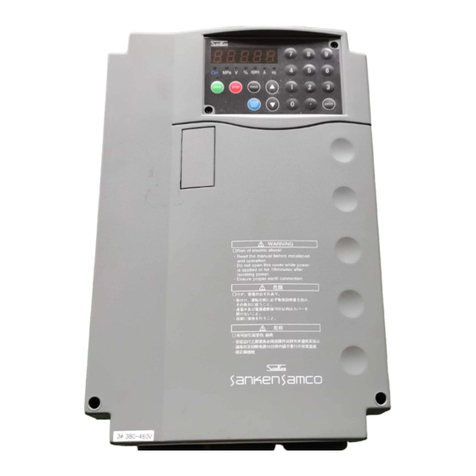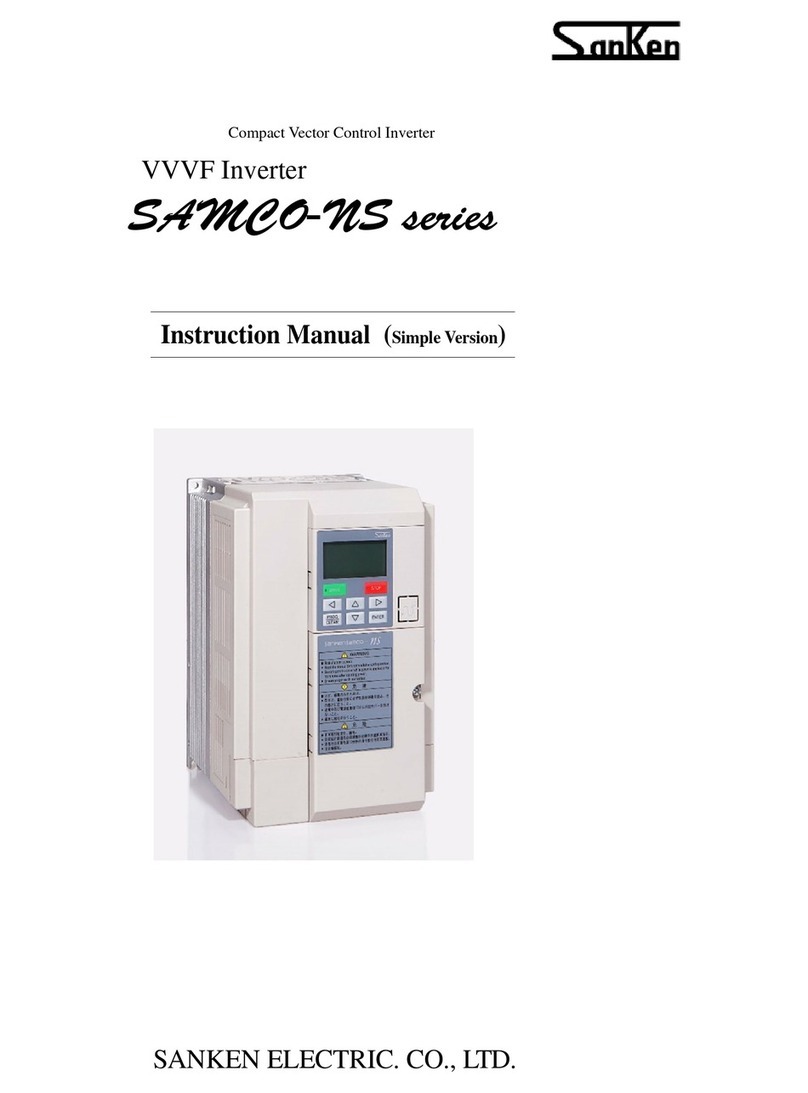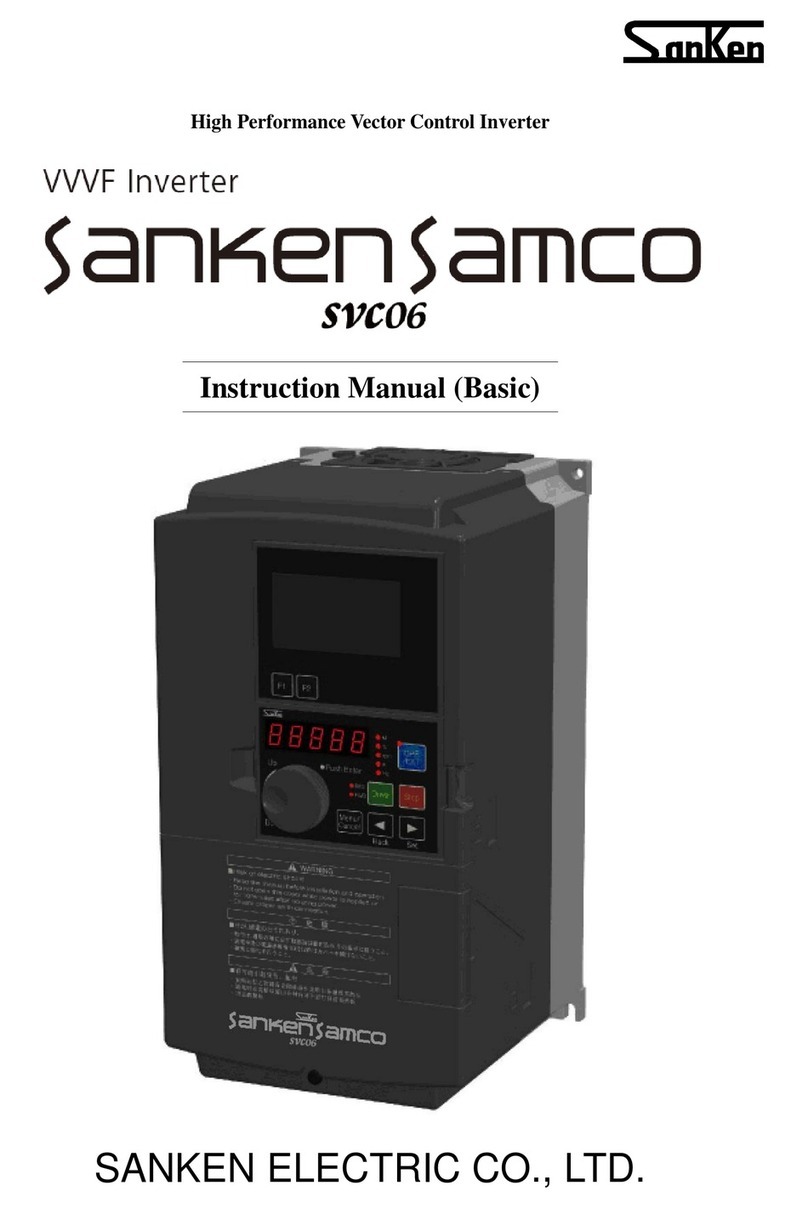
- 3 -
5. Operation Panel ...................................................................................................................................- 45 -
5-1 Names and Functions of Parts of the Operation Panel ........................................................- 45 -
5-1-1 LCD Display Part...........................................................................................................- 46 -
5-1-2 LCD Operation Part.......................................................................................................- 46 -
5-1-3 LED Display Part...........................................................................................................- 46 -
5-1-4 LED Operation Part.......................................................................................................- 46 -
5-2 Switching of Statuses............................................................................................................- 47 -
5-3 Status Display Mode.............................................................................................................- 48 -
5-3-1 Version Display..............................................................................................................- 48 -
5-3-2 Inverter Status Mode.....................................................................................................- 48 -
5-3-3 Alarm Display................................................................................................................- 50 -
5-3-4 Command Setting..........................................................................................................- 51 -
5-4 Function Code Display Mode................................................................................................- 53 -
5-4-1 Status Transition Diagram.............................................................................................- 53 -
5-4-2 Basic Operation.............................................................................................................- 54 -
5-4-3 Confirming Operation....................................................................................................- 55 -
5-4-4 Signed Operation ..........................................................................................................- 56 -
5-5 Special Functions..................................................................................................................- 57 -
5-5-1 Copy Function Operation ..............................................................................................- 57 -
5-5-2 Changed Code Display Operation ................................................................................- 58 -
5-5-3 Function Code Initialization Operation..........................................................................- 59 -
5-5-4 Alarm Contents Reading Operation ..............................................................................- 60 -
5-5-5 Alarm Status Confirmation Operation............................................................................- 61 -
5-5-6 Serial Number Display...................................................................................................- 62 -
5-5-7 7-Segment Monitor Display List ....................................................................................- 63 -
5-6 Connecting Operation Panel with Extension Cable..............................................................- 64 -
6. Operation .............................................................................................................................................- 65 -
6-1 Operation Steps ....................................................................................................................- 66 -
6-2 Test Run................................................................................................................................- 67 -
6-2-1 Confirmation Before Power Input..................................................................................- 67 -
6-2-2 Confirmation After Power Input .....................................................................................- 67 -
6-2-3 Basic Setting (1)............................................................................................................- 68 -
6-2-4 Motor Control Setting ....................................................................................................- 68 -
6-2-5 Basic Setting (2)............................................................................................................- 69 -
6-2-6 Motor Parameter Auto Tuning .......................................................................................- 69 -
6-2-7 Basic Setting (3)............................................................................................................- 74 -
*Both of ON and OFF will be the same operation.......................................................................- 75 -
6-2-8 Operation Confirmation.................................................................................................- 75 -
6-3 Special Functions..................................................................................................................- 79 -
6-3-1 JOG Operation..............................................................................................................- 79 -
6-3-2 Hold Operation ..............................................................................................................- 79 -
6-3-3 Notes on Free Run Stop Terminal (MBS)......................................................................- 80 -
6-4 Definition of Technical Terms................................................................................................- 83 -
7. Function Code......................................................................................................................................- 84 -
7-1 Representation and Description of Function Codes.............................................................- 84 -
7-2 Function Code List................................................................................................................- 85 -
7-3 Description of Functions .....................................................................................................- 103 -
7-4 Serial Communication Function..........................................................................................- 256 -
7-4-1 Outline.........................................................................................................................- 256 -
7-4-2 Terminal Functions and Wiring....................................................................................- 257 -
7-4-3 Inverter Operation and Related Function Code Setting by Serial Communication.....- 258 -
7-4-4 Communication with Dedicated Protocol (SANKEN Communication Protocol)..........- 260 -
7-4-5 Programming Design...................................................................................................- 262 -






























